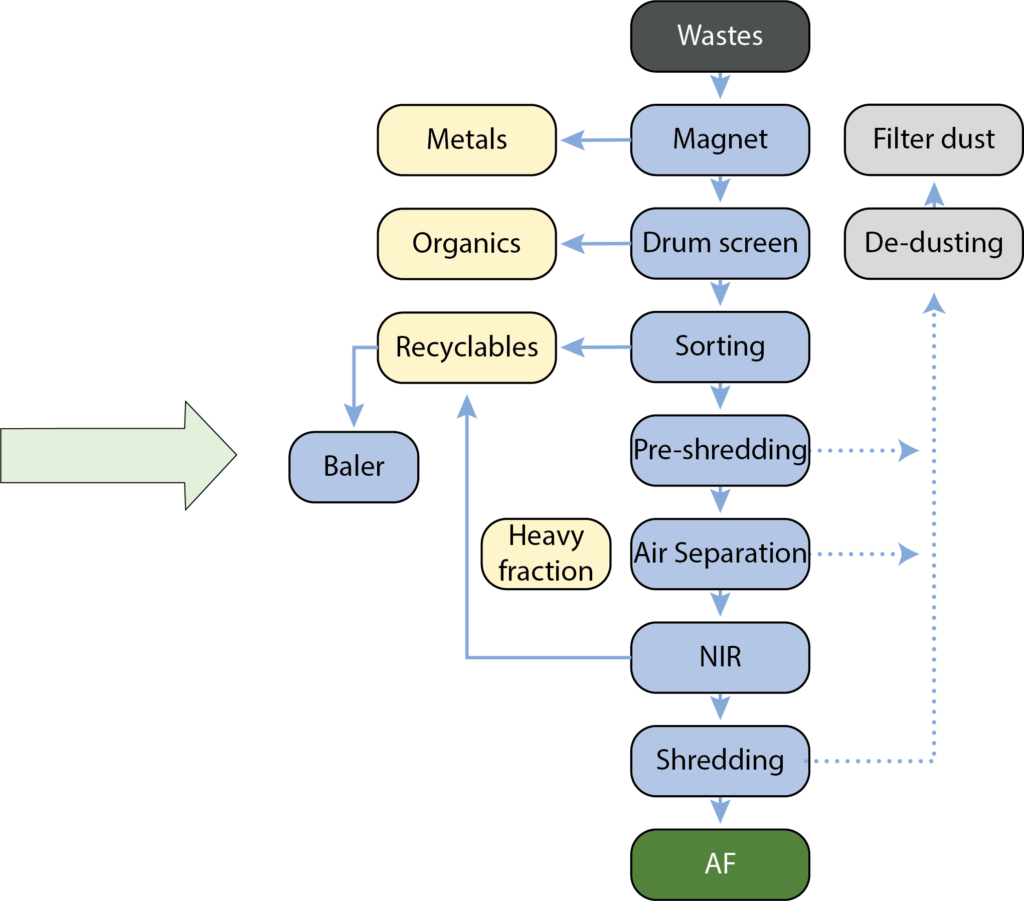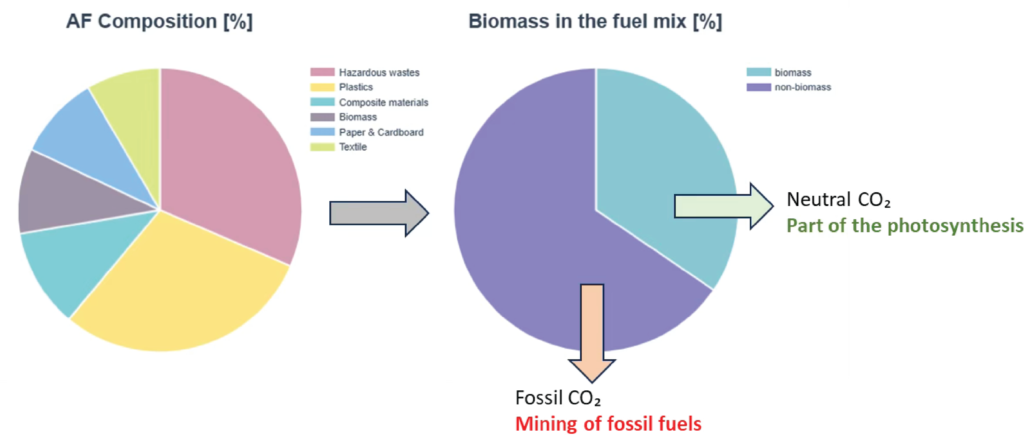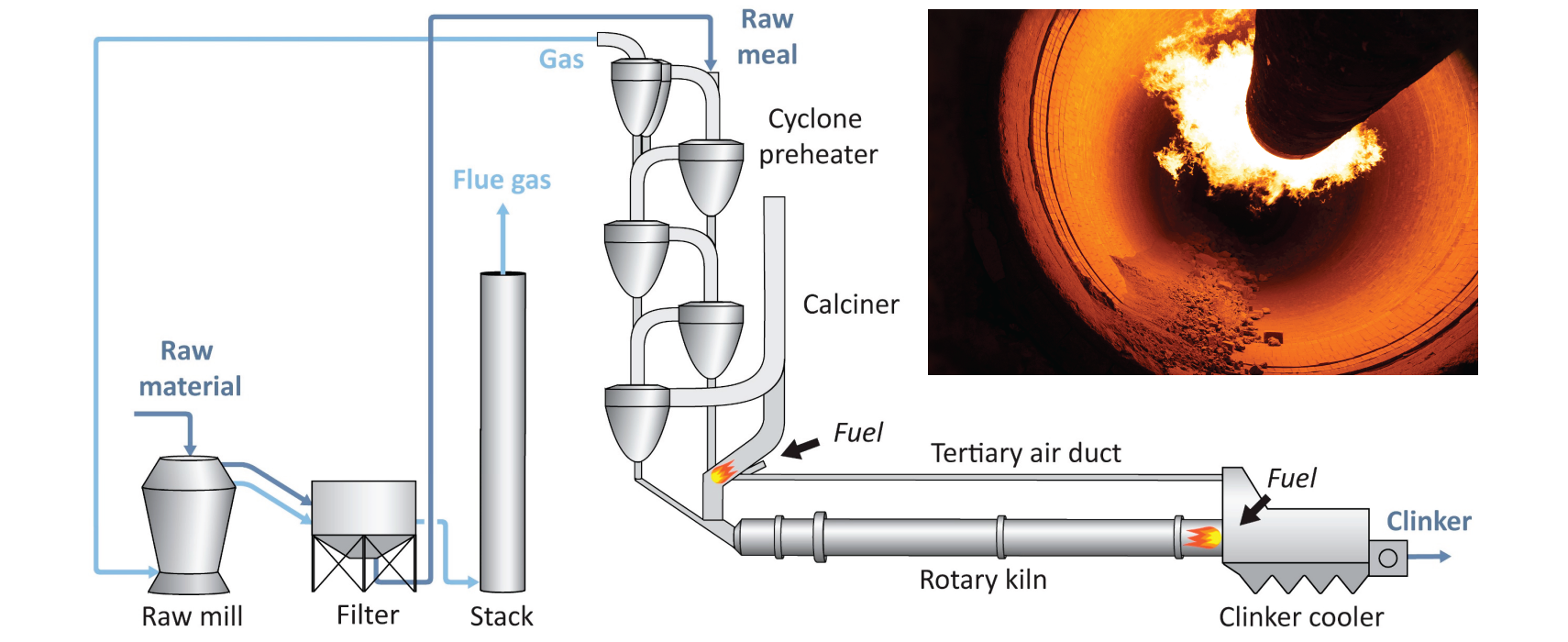Production of Alternative fuels
The alternative fuel contains various non-recyclable hazardous and non-hazardous wastes, processed into a product with defined quality and characteristics. The alternative fuels are used in the energy intensive heavy industries, such as lime, cement, WtE, power plants, steel, etc. The aim is to replace fossil fuels, such as coal, heavy fuel oil, petcoke, etc. The production of alternative fuels is usually a sequence of mechanical steps, mainly:
- Separation of inert and organic fractions
- Separation the light [dry] from heavy [wet] fraction
- Separation of metals [recyclables]
- Sorting of specific materials [recyclables]
- Mixing or blending of mono waste streams
- Size reduction [shredding]
- Compaction into bales or pellets

Alternative fuels are used in Europe, since 1950’s and have the following advantages:
- Less waste is landfilled, respectively less leached waters, CO₂ and methane are generated in the environment
- Less fossil fuels are used in the energy intensive heavy industries
- Less fossil fuels are mined, respectively fuel and energy are saved from the excavation and treatment of natural raw materials
- Less CO₂ emissions, due to the neutral carbon content in the alternative fuels, which can vary between 0% – 100% depending on the fuel mix composition*
- Economical and social benefits for all participants in the value chain
- Enabling circular economy and alignment with the sustainable development goals
*Large part of the alternative fuels consist mainly fossil (petrol) based materials (plastics, syntenic textile and rubber, oils, etc.). However, significant part of the alternative fuel’s composition is biomass (carbon neutral), due to materials such as cardboard, natural textile and leather, wood, etc, containing Carbon – 14. There are two types of carbon – Biogenic (containing Carbon – 14) and Fossil (does not contain any Carbon – 14) derived. The content of Carbon – 14 is determined by Accelerator Mass Spectrometry (AMS).

Energy Recovery of Alternative fuels
It is very important to be explained that the energy recovery of alternative fuels (hazardous and non-hazardous) is not harmful for the health of the living organisms and the environment, when it is done according to the following main rules:
- High temperature (above 850 °C – 1 100 °C) conditions
- Retention time of at least 2 seconds in high temperature conditions
- Sufficient oxygen supply into the process, providing complete burning conditions
- The composition of the alternative fuel not to contain or have limited concentration of certain pollutants, such as PCB, PCP, chlorine, fluorine, sulphur, heavy metals like mercury, thallium, etc.
- Continuous emissions measurements to be applied for NOx, CO, total dust, TOC, HCl, HF, SO₂ etc.
- Minimization, recycling or utilization of the ashes generated by the burning process.
If all these requirements and process conditions are fulfilled the harmful chemical compounds will be broken down to basic chemical substances, which are part of our nature and therefore harmless.
As well, it is important to be mentioned that the most favorable place for energy recovery of alternative fuels, exceeding the requirements is the cement kiln, providing:
- Temperatures of the gasses of 2 000 °C and 1 450 °C of the raw material
- Retention time of few minutes in high temperature conditions
- No ashes, due to crystal incorporation into the clinker composition.
- Air and pure oxygen supply technologies, modern filter systems, continuous emissions measurement systems, ant others.
However, if any of these rules and requirements is not fulfilled, the risk for the living organisms and environment is available!
To produce AF is not an easy job and energy recovery is not just burning of wastes, but chemical process. Both, require a lot of knowledge, efforts and experience!
